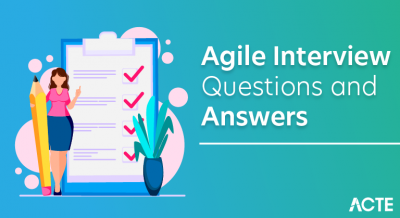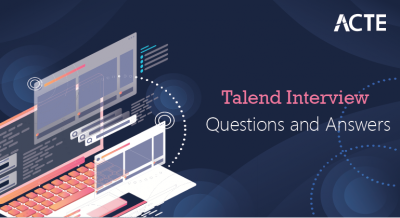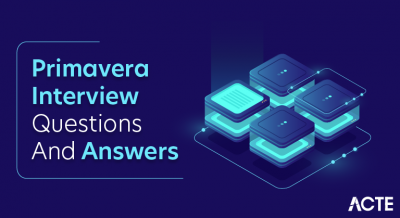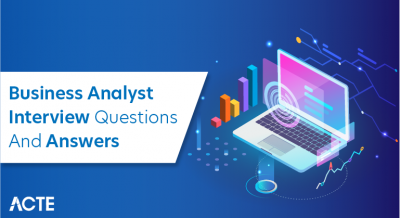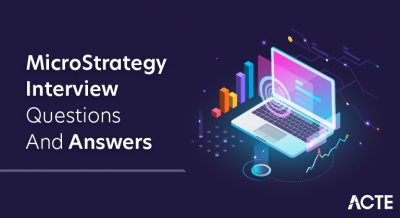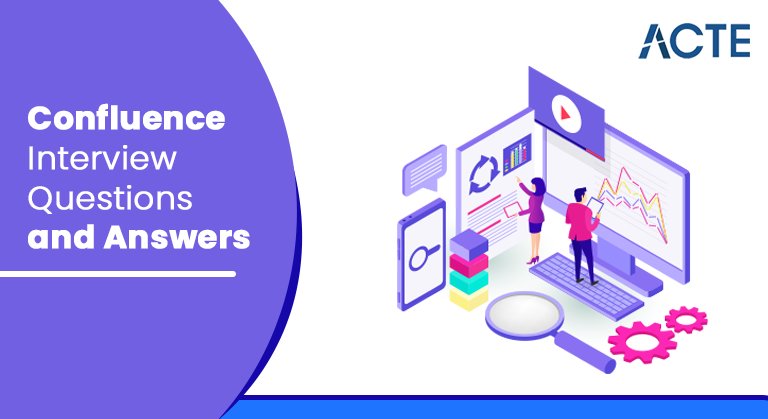
Confluence is a platform for collaboration and documentation created by Atlassian with the goal of promoting effective teamwork, knowledge exchange, and project collaboration inside businesses. It acts as a central location for producing, arranging, and disseminating content, encouraging teamwork and raising output levels.
1. What is JQL in confluence?
Ans:
In Confluence, JQL is commonly used in conjunction with the JIRA Issues macro to display filtered JIRA issues directly within Confluence pages. The JIRA Issues macro allows to embed JQL queries in Confluence pages, and the results are automatically updated whenever the underlying data in JIRA changes.
2. What is the Confluence tool’s primary goal?
Ans:
Confluence is a collaboration and documentation platform designed to facilitate seamless communication and knowledge sharing within teams. Its primary goal is to offer a centralized space where teams can collaboratively create, edit, and organize content, fostering efficient teamwork and ensuring that knowledge is easily accessible to all members.
3. What is project management specifically?
Ans:
The discipline of organising, planning, and supervising a project’s execution from start to finish is known as project management. To achieve effective delivery, it entails setting project goals, obtaining required resources, and controlling deadlines. Allocating tasks, reducing risks, and coordinating the work of cross-functional teams are the responsibilities of project managers.
4. What benefits does teamwork provide over working on a project alone?
Ans:
- Teamwork fosters diverse perspectives, combining varied skills and knowledge.
- Collaboration enhances creativity and innovation through idea-sharing.
- Efficient division of tasks leads to improve productivity.
- Team members can provide support and share the workload, reducing stress.
- Collective decision-making often results in more well-rounded choices.
- Teamwork builds a sense of camaraderie and fosters a positive work environment.
5. How should a successful collaboration software be constructed?
Ans:
- Intuitive user interface for seamless navigation and accessibility.
- Robust communication features, including real-time messaging and discussion threads.
- Scalability to accommodate growing teams and evolving project needs.
- Comprehensive integration capabilities with famous tools and platforms.
- Customization options for tailoring the software to particular team requirements.
- Reliable version control and document management for seamless collaboration on shared files.
6. What kinds of disputes might Confluence help you avoid?
Ans:
- Collaborative Editing: Reduces conflicts by allowing the real-time collaboration on documents.
- Clear Documentation: Reduces misunderstandings by providing a centralized repository for information.
- Task Assignment: Clarifies responsibilities, reducing ambiguity and potential disputes.
- Version History: provides transparency by tracking changes, preventing disputes over edits.
7. Describe a project that is completed inside a company?
Ans:
In a corporate setting, envision a project involving the development of a new software application. The project begins with a detailed planning phase, defining objectives, timelines, and resource requirements. During the execution phase, cross-functional teams collaborate within Confluence, utilizing its document-sharing capabilities to create project plans, technical specifications, and design documents.
8. What are some important considerations when working as a team?
Ans:
Working as a team involves crucial considerations such as efficient communication, clear task delegation, mutual respect, and the acknowledgment of diverse perspectives. It’s essential to establish general goals, maintain open channels for feedback, and cultivate a positive team culture
9. What does the term “stakeholder” mean?
Ans:
A stakeholder is an individual, group, or entity with a vested interest in the success or outcomes of a project or organization. Stakeholders can include internal or external parties such as employees, customers, investors, government entities, or the public. Their involvement, influence, and expectations can significantly impact the project’s direction and success.
10. Which activities can a collaborative software accomplish with ease?
Ans:
- Document Collaboration: Simultaneous editing and feedback on shared documents.
- Project Management: Task assignment, progress tracking, and team coordination.
- Communication: Real-time messaging, discussion forums, and video conferencing.
- File Sharing: Centralized storage for easy access and collaboration on files
11. How can Confluence be both time- and money-efficient?
Ans:
- Centralized Information: Reduces time spent searching for information by providing a single repository.
- Real-Time Collaboration: Accelerates decision-making and project progress.
- Version Control: Minimizes time wasted on reconciling conflicting edits.
- Task Automation: Saves time on repetitive tasks through workflow streamlining.
12. What advantages does the Confluence tool offer?
Ans:
- Real-time document collaboration.
- Wiki-style knowledge sharing.
- Seamless integration with Atlassian products.
- Version control for document tracking.
- Task tracking and assignment features.
13. What is a project’s lifecycle?
Ans:
A project’s lifecycle encompasses the stages a project undergoes, from initiation to completion. It includes initiation, planning, execution, monitoring and control, and closure. Initiation involves defining the project’s purpose and feasibility, planning outlines the scope, schedule, and resources, execution involves project work, monitoring ensures alignment with objectives, and closure involves finalizing project activities.
14. How do you define baselines in relation to a project?
Ans:
Baselines in a project represent reference points for project performance. They include key documents, such as the project schedule, budget, and scope. Baselines serve as benchmarks to measure and manage changes during the project. Once established, any alterations require thorough evaluation to maintain project integrity.
15. Differences between Confluence and JIRA?
Ans:
| Feature | Confluence | Jira | |
| Primary Purpose | Collaboration and Documentation platform for creating, sharing, and managing content. | Issue tracking and project management tool for tracking tasks, bugs, and managing projects. | |
| Use Cases | Team collaboration, document creation, knowledge sharing, and project documentation. | Workflow management, agile project management, and bug and issue tracking. | |
| Key Functionality | Content creation, wiki-style documentation, knowledge base, real-time editing. | Issue creation, tracking, prioritisation, sprint planning, and workflow management. | |
| Content Types | Pages, blogs, comments, attachments, and multimedia content. | Issues, epics, user stories, tasks, bugs, and custom issue types. | |
| Common Use in Development | Documentation, knowledge sharing, project planning. | Agile project management, bug tracking, and software development processes. |
16. What would you say a project charter is like?
Ans:
A project charter is the formal document that authorizes the existence of a project. It outlines the project’s objectives, scope, stakeholders, risks, and initial resource requirements. Similar to a project’s constitution, a charter sets the project’s direction and serves as a reference point for key decisions.
17. What are confluence technology’s essential requirements?
Ans:
Confluence, a collaboration platform, typically requires a compatible web browser, reliable internet connection, and sufficient system resources. It may need Java Runtime Environment (JRE) for server installations. Database requirements, such as PostgreSQL or MySQL, depend on the chosen deployment. Additionally, Confluence benefits from adequate storage space and regular backups for data protection.
18. In team collaboration, what are the critical elements that require attention?
Ans:
- Clear communication through open dialogue and active listening.
- Defined roles and responsibilities for accountability.
- Transparent goal-setting and alignment.
- Efficient use of collaboration tools like Confluence.
- Regular feedback loops and constructive criticism.
19. How will an ongoing project’s newest version be sent to all users?
Ans:
- Version Control: Utilize version control features within collaborative tools are Confluence to track changes and maintain a record of document versions.
- Real-Time Editing: Encourage users to collaborate in real-time on documents to ensure everyone is working on the most recent version simultaneously.
- Automated Notifications: Leverage automated notifications and alerts to inform users of updates and changes, keeping everyone informed promptly.
20. Distinguishes the projects, portfolio, and programs from each other?
Ans:
- Projects: Specific endeavors with defined goals, deliverables, and timelines, often requiring a dedicated team for execution.
- Portfolio: A collection of projects or programs managed as a group to achieve strategic objectives, typically aligned with organizational goals.
- Programs: Sets of related projects managed and coordinated collectively to achieve overarching objectives that might not be attainable by individual projects.
21. What does scope management?
Ans:
Scope management involves defining and controlling the work necessary for project success. It includes initiation, scope planning, scope definition, scope verification, and scope control. Proper scope management prevents scope creep, ensuring the project stays within predefined boundaries, meets objectives, and delivers the intended value. It involves continuous evaluation and adjustment throughout the project lifecycle.
22. What exactly WBS stands for in team collaboration ?
Ans:
WBS stands for Work Breakdown Structure in teamwork. It is a hierarchical breakdown of the whole scope of work that the team will be responsible for doing on the project. Tasks are arranged into manageable chunks by WBS, which makes it easier for teams to comprehend the project’s structure, assign resources wisely, and monitor progress.
23. What strategies may one propose to help cut a project’s duration?
Ans:
- Resource Optimization: Allocate resources more efficiently to speed up task completion.
- Parallel Task Execution: Identify tasks that can be performed simultaneously to reduce project timelines.
- Fast-Tracking: Overlapping sequential tasks to expedite project delivery.
24. What is effort variance?
Ans:
Effort variance is a project management statistic that measures the difference between the budgeted effort (or hours) and the actual work put in on a project. It reveals how well the actual effort matches the initial estimations. A positive variance implies that less work than intended was invested, whereas a negative variance indicates that more effort was necessary.
25. Define Quality Control?
Ans:
Quality control is a set of processes and activities within project management that focus on ensuring the deliverables meet the specified quality standards. It involves systematic inspection, testing, and monitoring to identify and correct defects or deviations from the project requirements
26. What is Atlassian Confluence?
Ans:
Atlassian Confluence is a collaboration and documentation tool designed to enhance team productivity. It provides a centralized platform for teams to create, share, and collaborate on documents, project plans, meeting notes, and more. Confluence integrates seamlessly with other Atlassian products, fostering a cohesive work environment
27. In what way do you know the Confluence tool?
Ans:
- Document Collaboration: Teams can collaboratively create and edit documents in real-time.
- Knowledge Sharing: Confluence serves as a central repository for sharing and saving organizational knowledge.
- Project Planning: Teams use Confluence for project planning, task tracking, and progress monitoring.
28. What is the main objective of the confluence tool?
Ans:
Confluence is a collaborative platform designed to facilitate knowledge sharing, team collaboration, and documentation within organizations. Its primary objective is to offer teams with a centralized space where they can create, share, and collaborate on documents, ideas, and project-related information.
29. Describe a work that is frequently finished within an organization?
Ans:
Within organizations, a task frequently accomplished is collaborative document creation and modifying using tools like Confluence. Teams often collaborate on project plans, reports, and documentation, ensuring that information is accurate, up-to-date, and accessible to all stakeholders.
30. Who are the “stakeholders”?
Ans:
A project, programme, or organization’s stakeholders are people or organisations with a stake in it or that may affect it. Employees, executives, clients, investors, regulators, suppliers, and more are examples of both internal and external stakeholders that may be included. Due to the fact that their requirements, expectations, and concerns must be recognised, acknowledged, and addressed at every stage of the project, stakeholders are absolutely essential to its success.
31. What advantages does the Mcq Confluence tool offer?
Ans:
- Efficient Collaboration: The Mcq Confluence tool facilitates information exchange and project collaboration among team members by offering a centralised platform.
- Real-time Editing: Users can collaborate on documents simultaneously, facilitating real-time editing and feedback.
- Knowledge Management: Enables the creation of a knowledge base with documentation, reducing the risk of information silos.
32. What are the drawbacks of using Confluence?
Ans:
- Learning Curve: When adjusting to the platform’s features and functions, new users may encounter a learning curve.
- Resource Intensive: For larger instances or extensive use, Confluence might require significant system resources.
- Cost: Depending on the organization’s size, the licensing cost can be a consideration.
- Overwhelming Features: The abundance of features might be overwhelming for smaller teams with simpler requirements.
33. How customizable are Confluence and Jira?
Ans:
- Jira: Highly customizable with flexible workflows, custom fields, and issue types. Users can generate custom dashboards, reports, and filters to meet specific project requirements.
- Confluence: provides an extensive customization through themes, templates, and macros. Users can adapt spaces and pages to align with team’s unique needs, making a tailored environment for collaboration.
34. What is the milestone approach?
Ans:
The milestone approach is a project management strategy where significant points of progress, achievement, or completion are identified and marked as milestones. These milestones serve as key checkpoints in a project timeline, allowing teams and stakeholders to track progress, celebrate achievements, and ensure that the project stays on course.
35. What are the basic parts of the architecture of Confluence?
Ans:
Confluence’s architecture comprises several key components. The core elements include a relational database, where content is stored, and a web server, responsible for handling user requests. Additionally, Confluence employs a collaborative editor for real-time content creation and editing. The application server manages the processing of requests and executes business logic.
36. What does “effort variance” mean?
Ans:
Effort variance is the difference between the intended effort for a task or project and the actual effort exerted. It is a project management statistic that assesses the difference between the initial resource allocation or time estimation and the resources and time actually used during project execution.
37. Confluence: What is it?
Ans:
Atlassian’s Confluence is a collaboration and documentation platform. It functions as an all-in-one team workspace, allowing users to create, share, and collaborate on material such as papers, wikis, project plans, and more. Confluence facilitates real-time collaboration through features such as collaborative editing, comments, and page feedback.
38. What is covered by the Confluence?
Ans:
- Documentation: Creating and sharing documents, meeting notes, and project documentation.
- Knowledge Sharing: Centralized repository for a team knowledge, best practices, and lessons learned.
39. In Confluence, what are blueprints and templates?
Ans:
- Blueprints: Confluence Blueprints are predefined templates that offer a structured format for common use cases. They streamline content creation by offering pre-designed layouts for meeting notes, project plans, and more.
- Templates: Confluence allows users to generate custom templates, defining specific structures for various types of content. Templates ensure consistency in documentation and offer a starting point for collaborative work.
40. What is the purpose of Jira?
Ans:
Jira serves as a powerful project management and issue tracking tool designed to enhance team collaboration and workflow efficiency. It facilitates the creation, tracking, and prioritization of tasks, ensuring that teams can manage projects seamlessly. Jira offers a centralized platform for teams to plan, track, and release software, making it a vital asset for agile development, bug tracking, and overall project management.
41. What is the purpose of Confluence?
Ans:
Confluence is a collaborative platform that allow teams to create, share, and collaborate on content and projects in a real-time. Its purpose is to enhance team collaboration by providing a centralized space for documentation, knowledge sharing, and project planning.
42. How can Jira and Confluence be integrated?
Ans:
Jira and Confluence integration enhances the synergy between project management and collaborative documentation. This integration allows users to embed Jira issues, reports, and dashboards directly into Confluence pages, fostering seamless communication between development teams and stakeholders
43. For whom is Confluence intended?
Ans:
Confluence is intended for a wide range of users, including teams and organisations looking to better their collaboration, knowledge sharing, and documentation methods. It serves a diverse variety of professionals, such as project managers, developers, content providers, and business teams.
44. What characteristics does Confluence have?
Ans:
- User-Friendly Interface: Intuitive and easy-to-navigate platform.
- Rich Content Creation: Support for various media types, including text, images, and files.
- Real-Time Collaboration: Enables live collaboration, discussions, and feedback.
- Template Library: Extensive collection of templates for structured document creation.
45. What kind of templates does Confluence offer?
Ans:
- Meeting Notes: Templates for organizing and documenting meeting discussions.
- Project Plans: Structured templates for outlining project goals, timelines, and tasks.
- Product Requirements: Templates designed for capturing and managing product specifications.
- Knowledge Bases: Templates for creating comprehensive knowledge bases and documentation.
46. Which Confluence versions are now available?
Ans:
As of the latest information, Confluence is available in various editions, including Confluence Cloud, Confluence Server, and Confluence Data Center. Confluence Cloud is a cloud-based offering, providing flexibility and accessibility from anywhere. Confluence Server is an on-premises solution for self-hosted environments, offering control over the server infrastructure.
47. Does Confluence offer free usage for small businesses?
Ans:
Confluence does offer a free version known as Confluence Free, which can be particularly beneficial for small businesses. The free version provides essential collaboration features, including document creation, sharing, and real-time editing.
48. Is Confluence suitable for remote use?
Ans:
Confluence is highly suitable for remote use, offering a robust collaborative platform that enables teams to work seamlessly from various locations. Its cloud-based option ensures accessibility from anywhere with an internet connection. Features like real-time editing, comments, and integrated communication tools make it an ideal choice for remote teams, fostering collaboration and maintaining productivity regardless of geographical distances.
49. What is the structure of Confluence?
Ans:
Confluence follows a hierarchical structure designed to organize content effectively. The primary building blocks include Spaces, which act as containers for related content, and Pages, which are individual documents within a Space. Pages can further contain nested pages, attachments, comments, and multimedia elements.
50. Which phrases in Confluence are essential?
Ans:
- Space: Represents a container for organizing related content within Confluence.
- Page: The fundamental unit of content in Confluence, where information is created and stored.
- Edit: Allows users to modify and contribute content to Confluence pages.
- Comment: Enables users to provide feedback or discuss content directly on Confluence pages.
51. How does Confluence handle linking between pages?
Ans:
Confluence facilitates seamless linking between pages to enhance navigation and connectivity. Users can create links by using the page title or URL, ensuring a direct connection between related content.
Additionally, Confluence offers autocomplete suggestions as users type, simplifying the linking process.
52. How does Confluence support the creation of rich content?
Ans:
Confluence provides a user-friendly and versatile platform for creating rich content through a variety of tools. Users can incorporate formatted text, images, tables, and multimedia elements effortlessly.
Additionally, Confluence supports macros, enabling the integration of dynamic content like charts, calendars, and task lists
53. Explain the collaborative editing feature in Confluence?
Ans:
- Real-Time Editing: Multiple users can edit a Confluence page simultaneously.
- Instant Updates: Edits are reflected in real-time, eliminating the need for manual refreshes.
- Conflict Resolution: Confluence handles conflicts gracefully, preventing data loss.·
- Collaborative Environment: Fosters teamwork by allowing concurrent contributions.
54. What are Confluence’s advanced search options?
Ans:
Confluence provides robust advanced search options, empowering users to find specific information efficiently. Users can employ search operators, such as “AND,” “OR,” and “NOT,” to refine search queries. Additionally, Confluence supports the use of wildcard characters, phrase searches, and specific filters, allowing for intricate and precise searches.
55. What do Confluence macros mean?
Ans:
In Confluence, macros are dynamic elements that enhance content presentation and functionality. Macros allow users to embed interactive and specialized content, such as tables, charts, or multimedia, within Confluence pages. They provide a versatile way to customize and enrich the user experience, allowing for the seamless integration of various elements without complex coding.
56. Explain Confluence Spaces and role in organizing content?
Ans:
Confluence Spaces serve as dedicated areas for organizing and categorizing related content. They act as containers for pages, providing a structured approach to content management. Spaces can be customized to suit specific projects, teams, or themes, allowing users to compartmentalize information effectively.
57. How does Confluence handle versioning?
Ans:
Confluence employs a versioning system to track changes made to pages over time. Each edit generates a new version of the page, allowing users to revert to previous states if needed. The version history provides a detailed record of modifications, including who made the changes and when.
58. How does Confluence handle the integration of external plugins?
Ans:
Confluence supports the seamless integration of external plugins, expanding its functionality to meet diverse needs.
Users can enhance Confluence with plugins available from the Atlassian Marketplace or develop custom plugins tailored to specific requirements.
59. How does Confluence assist in maintaining a clean and organized space?
Ans:
- Confluence offers several features to support the maintenance of a clean and organized space.
- The use of hierarchical page structures, labels, and categories helps categorize and structure content logically.
- Spaces can be customized with personalized layouts, templates, and themes for a consistent look and feel.
60. What are Confluence Labels?
Ans:
In Confluence, Labels are a metadata tagging system that helps organize and categorize content. Users can assign one or more labels to pages, blog posts, or attachments, allowing for easy content discovery and navigation. Labels serve as a flexible classification system, aiding in the creation of dynamic content groupings.
61. Define Confluence Page Restrictions?
Ans:
Confluence Page Restrictions provide granular control over who can view or edit specific content. Page Restrictions can be set to limit access to certain users or groups, ensuring that sensitive information remains secure.
62. How does Confluence handle the export of content to various formats?
Ans:
- Confluence offers robust content export functionality, allowing users to export pages and spaces to various formats.
- Users can export content to PDF, Word, HTML, and XML formats, providing flexibility in sharing and distributing information.
- This feature ensures that Confluence content can be accessed and utilized outside the platform, catering to diverse user preferences and facilitating seamless collaboration with external stakeholders.
63. Explain Confluence’s approach to user feedback and comments on ?
Ans:
Confluence emphasizes user feedback and collaboration through its intuitive comment and feedback system. Users can provide comments on pages, blog posts, and attachments, fostering communication and collaboration. The platform encourages open discussion, enabling team members to share thoughts, suggestions, and corrections seamlessly.
64. Describe Confluence Watchers ?
Ans:
Confluence Watchers are users who subscribe to receive notifications about changes and updates to a specific Confluence page or space. By becoming a watcher, users stay informed about modifications, comments, and additions to the content they are interested in.
65. Describe Confluence’s role in knowledge management?
Ans:
Confluence provides a concentrated area for content creation, organization, and sharing, making it a strong platform for knowledge management. It makes it easier to create documentation and collaboration places.
Knowledge discovery is aided by Confluence’s version history, search features, and tool integration.
66. How does Confluence handle content indexing and searching?
Ans:
- Automated Indexing: Confluence automatically indexes all pages and attachments.
- Comprehensive Search: The indexing process includes metadata, ensuring a thorough search.
- Advanced Search Features: Users benefit from filtering options and keyword highlighting.
67. What features are available for accessing content on mobile devices?
Ans:
- Responsive Design: Confluence adapts to different screen sizes for optimal viewing.
- Offline Access: Users can access pages even without an internet connection.
- Push Notifications: Alerts keep users informed about updates and changes.
68. Explain Confluence’s role in fostering a knowledge-sharing culture within an organization?
Ans:
Confluence is the platform for collaboration that helps a company develop a culture of knowledge sharing. It provides a centralized area where teams may produce, exchange, and work together on ideas, information, and documents.
69. Explain Confluence Page Properties?
Ans:
Users have the ability to add structured data to pages using Confluence Page Properties. Information like important dates and project specifics may be included in these properties.Users can create templates for consistent data entry by elucidating attributes, which facilitates information arrangement in a structured manner.
70. How does Confluence handle the creation and management of meeting notes?
Ans:
- Confluence streamlines the creation and management of meeting notes by providing dedicated templates and collaborative editing capabilities.
- Users can create a meeting notes template, capture agenda items, record discussions, and assign action items.
- With real-time collaboration, multiple team members can contribute simultaneously during and after the meeting.
71. Describe Confluence Content by Label?
Ans:
Confluence Content by Label allows users to organize and categorize related pages using labels. Labels are keywords or tags that can be applied to pages, making it easier to group, search, and manage content. This feature promotes organization and discoverability, enabling users to locate information efficiently.
72. Can Confluence be integrated with continuous integration tools?
Ans:
Yes, Confluence can be integrated with continuous integration tools. Plugins and integrations are available to connect Confluence with popular CI tools like Jenkins or Bamboo. This integration facilitates the display of build status, release notes, and other CI-related information directly within Confluence pages
73. Explain Confluence’s @mentions ?
Ans:
Confluence’s @mentions feature enables users to notify and involve specific individuals or groups in discussions or tasks. By tagging someone with an @mention, the mentioned user receives a notification, drawing attention to the relevant content. This feature streamlines communication, enhances collaboration, and ensures that the right people are engaged in discussions, making Confluence a more interactive and responsive platform.
74. How does Confluence support content moderation ?
Ans:
- Confluence’s built-in permissions and approval procedures help with content moderation.
- Administrators may control who can create, view, and update material by assigning permissions.
- Confluence also supports the development of content approval protocols, which ensure that particular material is reviewed before being published.
75. Can Confluence be integrated with third-party authentication systems?
Ans:
Confluence offers seamless integration with third-party authentication systems, allowing organizations to implement single sign-on (SSO) for enhanced security and user management.
Through protocols like SAML or OAuth, Confluence can be configured to authenticate users against external identity providers, streamlining access and simplifying user authentication processes.
76. How Confluence supports the creation of dynamic content using Jira Query Language (JQL)?
Ans:
Confluence supports the creation of dynamic content through Jira Query Language (JQL), a powerful query language associated with Jira. By embedding JQL queries within Confluence pages, users can dynamically pull data from Jira, such as project status, issues, or specific datasets.
77. What is Confluence Page History?
Ans:
Confluence Page History tracks and archives changes made to a Confluence page over time. It provides a detailed record of edits, additions, and deletions, allowing users to view and revert to previous versions. This feature is invaluable for maintaining version control, tracking collaborative edits, and recovering content in case of accidental changes or data loss.
78. Describe the process of linking Confluence pages?
Ans:
Linking Confluence pages is a straightforward process. Users can create links by using the page title in double square brackets [[page title]] or by using the “Insert More Content” option to create links to other pages or external URLs. Additionally, users can establish bidirectional links between pages, promoting a well-connected and navigable information structure
79. Can Confluence be configured to use custom themes?
Ans:
Linking Confluence pages is a straightforward process. Users can create links by using the page title in double square brackets [[page title]] or by using the “Insert More Content” option to create links to other pages or external URLs. Additionally, users can establish bidirectional links between pages, promoting a well-connected and navigable information structure
80. Explain Confluence’s role in facilitating the creation and maintenance of project documentation?
Ans:
- Confluence plays a pivotal role in facilitating the creation and maintenance of project documentation.
- Teams can collaboratively create project pages, organize information using templates, and use labels and categories for efficient structuring.
- Integration with Jira allows for seamless linking of project tasks and issues to Confluence pages, ensuring that documentation remains up-to-date.
81. Explain Confluence Spaces Permissions?
Ans:
Confluence Space Permissions dictate the level of access and actions users can perform within a space. Administrators can configure permissions to control viewing, editing, and commenting rights. This flexibility allows teams to tailor access according to roles, ensuring secure collaboration while maintaining privacy.
82. Describe archiving and restoring Confluence spaces?
Ans:
Confluence provides a straightforward process for archiving and restoring spaces. Archiving preserves space content without active updates, decluttering the interface. Restoration allows retrieval of archived spaces, ensuring that historical information remains accessible. This feature aids in managing content lifecycle efficiently.
83. How does Confluence support mobile access?
Ans:
- Confluence is mobile-friendly, allowing users to stay connected and communicate even on the road.
- The mobile UI is responsive and device-agnostic, resulting in a smooth experience.
- Users may browse, update, and comment on information from any place, assuring productivity.
84. Explain Confluence in supporting remote collaboration and documentation?
Ans:
Confluence plays a pivotal role in supporting remote collaboration and documentation. Its cloud-based platform enables teams to work seamlessly from different locations, ensuring real-time collaboration on shared documents, projects, and knowledge bases. Features such as simultaneous editing, commenting, and integrations with other remote-friendly tools enhance communication and productivity
85. Can Confluence be configured to enforce content approval workflows?
Ans:
- Confluence can be configured to enforce content approval workflows. With built-in features and customizable templates, administrators can define specific approval processes for content creation or modifications.
- This ensures that content goes through a structured review and approval cycle before being published, enhancing quality control and adherence to organizational standards.
86. Explain Confluence’s “Excerpt Include” feature?
Ans:
The “Excerpt Include” feature in Confluence allows users to embed content from one page into another dynamically. It promotes content reusability, ensuring that updates in the source content automatically reflect in all instances where it’s included. This feature enhances consistency and efficiency in content management.
87. Describe Confluence in facilitating documentation for compliance or regulatory purposes?
Ans:
Confluence is critical in enabling paperwork for compliance or regulatory needs. It provides a centralized platform for authoring, organising, and updating documents. Version history, permissions management, and audit logs guarantee that compliance paperwork is accurate, traceable, and fulfils regulatory criteria.
88. Explain integrating Confluence with single sign-on solutions?
Ans:
The integration of Confluence with Single Sign-On (SSO) solutions streamlines user authentication. By connecting to SSO systems, Confluence enhances security and user convenience, as users can access Confluence using their existing credentials without the need for separate logins.
89. Can Confluence as a Central Documentation Repository for Multiple Projects?
Ans:
Yes, Confluence can serve as a central documentation repository for multiple projects. Each project can have its dedicated space, ensuring separation and organization. Meanwhile, the flexibility of permissions and customization options allows teams to tailor the documentation structure according to the unique needs of each project.
90. Describe creating and using Confluence Templates for standardizing content creation?
Ans:
Confluence Templates are pre-designed structures that guide users in creating standardized content. They streamline content creation by providing a consistent format, ensuring uniformity across pages. Teams can create and use templates for various purposes, from meeting notes to project documentation, fostering efficiency and adherence to standards.


